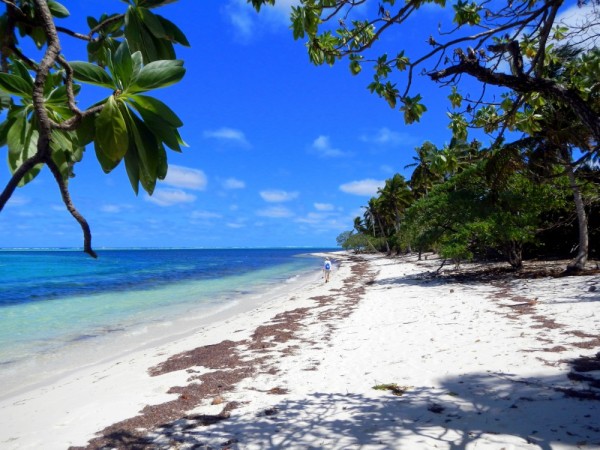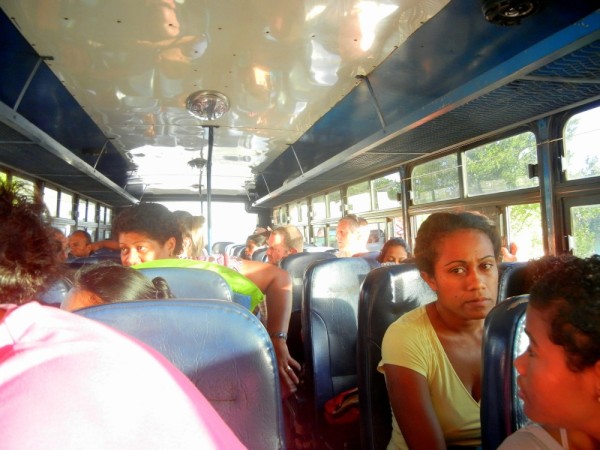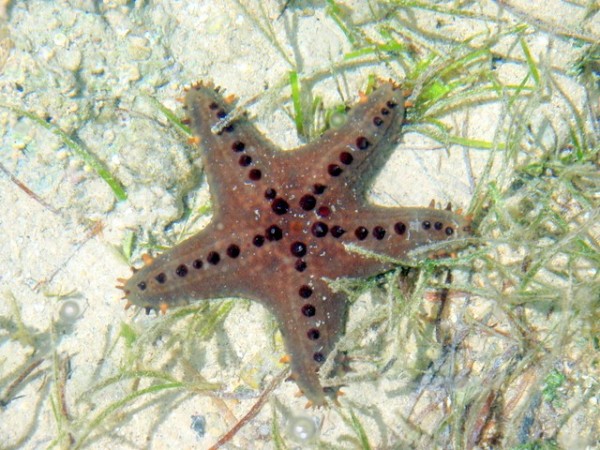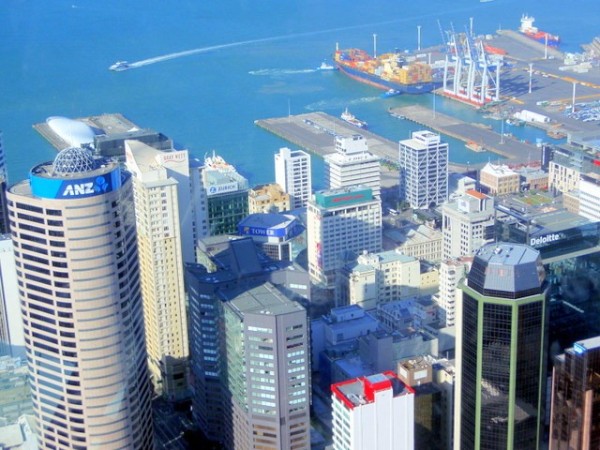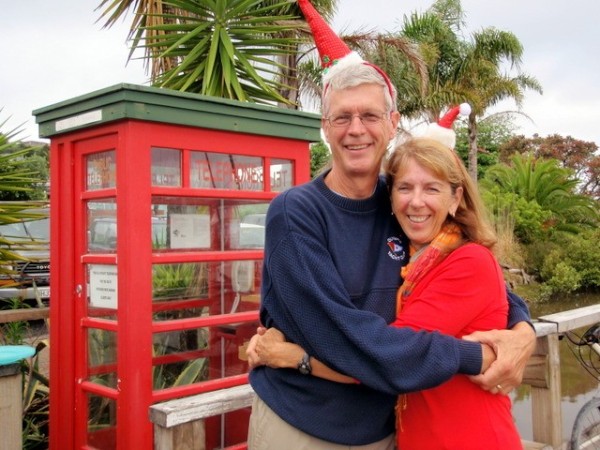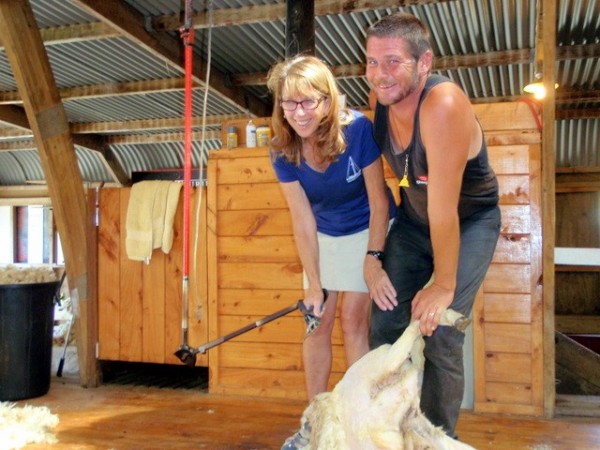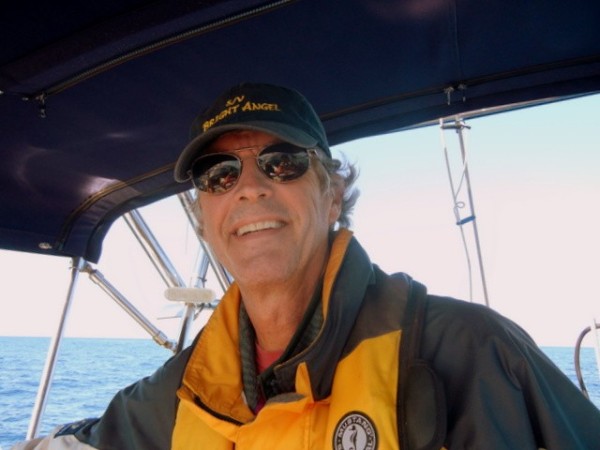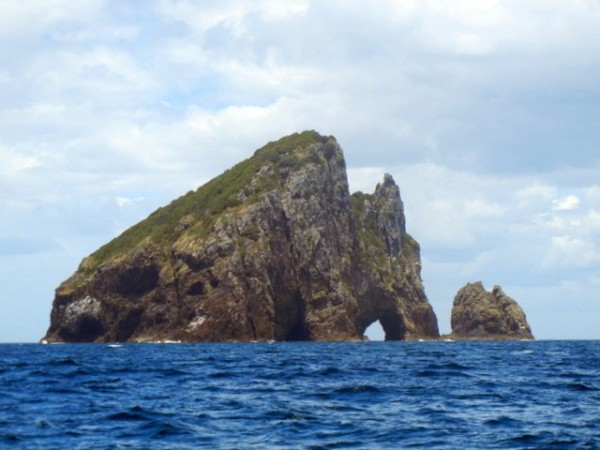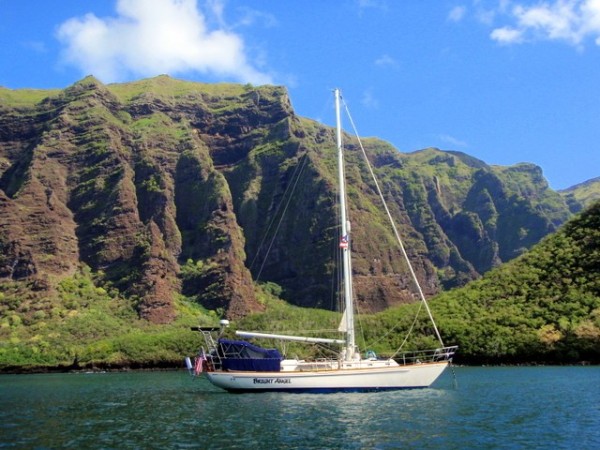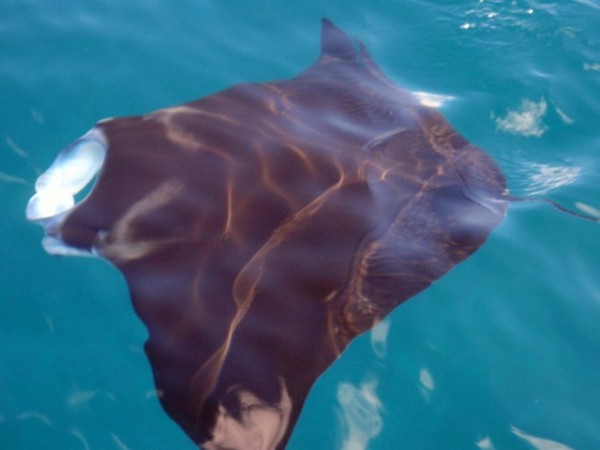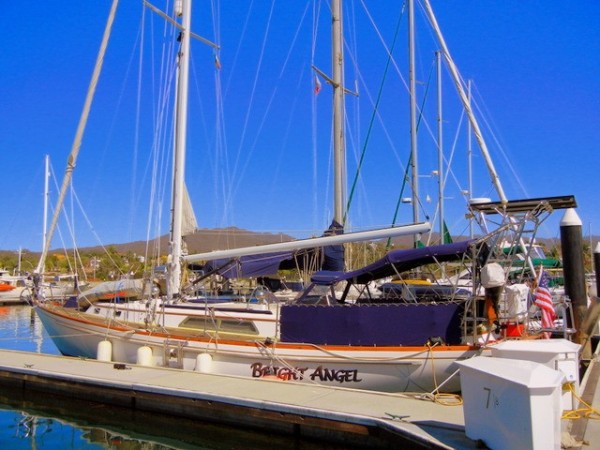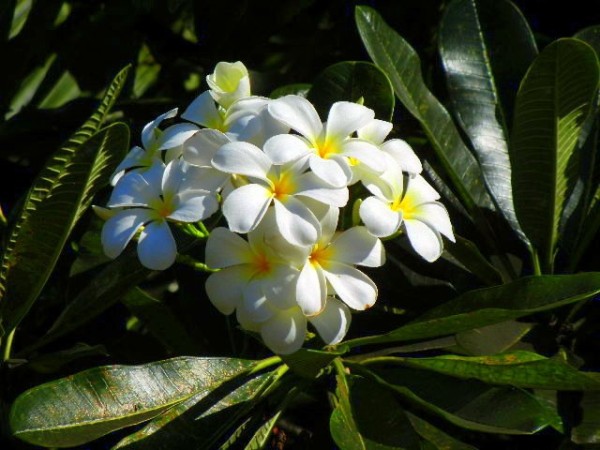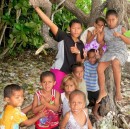
SailBrightAngel
The Adventure Continues
20 October 2013 | Fulanga, Southern Lau Group, Fiji
20 October 2013 | Village of Maunaithaki, Fulanga, Lau Group, Fiji
20 October 2013 | Village of Maunaithaki, Fulanga, Lau Group, Fiji
20 October 2013 | Southern Lau Group, Fiji
29 September 2013
10 August 2013 | Savusavu, Vanua Levu
06 July 2013
06 July 2013
06 July 2013
03 July 2013
02 July 2013
01 July 2013
29 June 2013
24 June 2013
13 November 2012 | Vava'u, Tonga
04 September 2012 | Bora Bora, French Polynesia
31 July 2012 | Uturoa, Raiatea
14 June 2012 | Tiputa, Rangiroa, Tuamotus
The Motion of the Ocean
06 July 2013
Linda
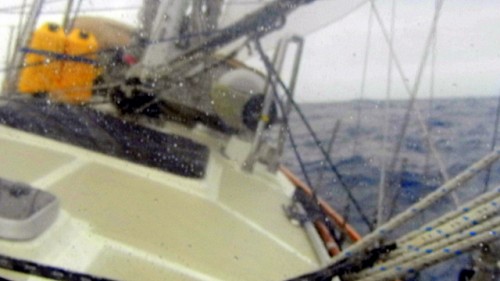
(Note from Bob: With the completion of one of our toughest ocean passages, NZ to Fiji, I thought it would be interesting to reprise an insightful letter Linda wrote about our longest ocean passage - Mexico to the Marquesas. What she says here is applicable to every passage we have undertaken.)
The Pacific Ocean is by far the largest ocean on the planet. It is more than twice the size of the Atlantic and covers almost one third of the earth's surface. At 64 million square miles, its area is greater than that of all the earth's land masses combined. There are approximately 20,000 islands in the Pacific Ocean.
It's never still, it never rests, it's never predictable and has many moods. When I pondered the reality of spending 23+ days crossing the largest ocean on the planet I knew of the possibility of days with mild to no winds where we might just float around and get nowhere fast or just the opposite, days of "sit down, hold on" heavy winds and rough seas. I knew the Pacific would try our patience, challenge our sailing skills, and test the seaworthiness of our boat. I did not think much about the never-ending motion of the ocean because one of the things I love so about sailing is the changing state of the water. I love the mesmerizing movement of waves and swells, the ever changing patterns and colors of the water and the many ways wind affects them. I didn't give much thought to NEVER having ONE still moment for the duration of the twenty eight hundred mile trip! You sleep in motion, you make meals in motion, you eat in motion, and you do all those private things in motion. Quite frankly sometimes you just shout out loud.....PALEEEZE S T O P!
Sometimes the motion is subtle and consistent and you get into a rhythm of subconsciously moving with it. Other times it sneaks up and knocks you sideways. I have a few large Technicolor bruises from being caught off guard by that motion and being thrown across the cabin!
You manage to sleep while being tossed from side to side because you've figured out which limb to "T" out from your body to brace yourself. You cannot eat more than you can grasp so unless you devise a system of using underarms and thighs you pretty much never have more than a one plate meal. One hand for the plate the other for the silverware, a pocket for the napkin. No, your lap is not a stable platform. We do have cup holders in the cockpit so eating there allows you a beverage with your meal; or, as I mentioned, thighs are good substitutes for cup holders.
Fixing meals on the ocean could qualify as an Olympic sport. A must is your ability to hold the crouching Sumo wrestler pose for lengths of time so you aren't thrown off balance by the boat suddenly healing thirty degrees or by the gimbaled stove swinging the same arc. I have a rubber colander with extension handles that bridge the sink. This is one of my most coveted kitchen utensils. I put all my ingredients for a meal in there and I don't have to chase them back and forth on the counter. If we're having sandwiches or hamburgers all the condiments are gathered in the colander. I also have skid proof (ha ha!) dishes that sometimes work to stop the sliding, but if the boat heals too far they just tip over and dump their contents. I trusted a can of peaches (in heavy syrup) to stay put but just as I filled my hands with other stuff it took a slider. It's bad enough the can leaves a dent in the teak floors but the mess is compounded by juice dripping through the cracks in the floorboards . . . there's an engine under there (and a place Bob keeps pristinely clean!). A friend skid proofed her countertops by lining them with cut up yoga mats; wish I had done that.
I use sponges, plastic bags, paper cups, etc., to quiet all the things in the cupboards. You would be surprised at how irritatingly noisy even cardboard boxes can be when they are constantly bumping into each other. The smallest sound is the one that will keep you awake while you try to sleep, even with earplugs - which are an essential part of sleeping gear on a passage. I do try to buy as many items in non-glass containers as possible, but sometimes that works against me. I was happy to find soy sauce in a plastic bottle. Once when I opened the cupboard the soy sauce jumped out and during that nano- second of time I was thinking "thankfully it won't dent the floor or break when it hits." No . . . it hit the floor, bounced, dislodging the lid, spewing "beetle juice" on the ceiling and floors, bouncing once more to include the nav station and salon (basically our office and living room) in its line of fire, and then down the floorboards into Bob's pristine engine compartment. Not good! I was discovering soy sauce spots for weeks thereafter.
At day twenty two it already seemed like a very l o n g time since we left Mexico. Twenty two days on the ocean is nothing like twenty two days on land. There is only one kind of scenery, miles and miles of water, endless sky and amazing cloud formations. I have never seen such enormous clouds! I saw every size, shape and color of cloud imaginable, and some you just couldn't dream up in your mind. If you like to play the game "what does that cloud look like" the ocean is the place to be! As far as ocean wildlife goes we saw no whales, no Manta Rays, no turtles, only a few dolphins and birds. We had about nine Boobies ride with us for a day but we were glad when they left because they do not clean up after themselves. Yuk! I poked them with a boat hook a few times and they just teetered a bit and squawked at me. I finally walked right up to them and swatted them on their backsides and they still would not fly away. And then there are the flying fish and squid that litter the deck during the night in rough seas. We have a friend who has a Pug onboard their boat and he walks the deck in the morning during passages and eats all the squid and fish. I bet he has really bad breath!
We had calm winds and rolling seas; we had squalls with winds over 32kts; we had big swells with blinding rain. One wave washed over the top of the lifelines and filled the cockpit up to my ankles. That was a bit of a surprise. We got caught in numerous squalls as we got closer to the equator. They showed up on the radar as big yellow blobs spanning miles. We would be soaked to the bone, change into dry clothes and a few hours later get drenched again. We finally just resigned ourselves to shorts, T-shirts and bare feet. We spent many hours hand steering the boat in wild waves, high winds and lightening . . . Yikes! It was a little unnerving but exciting. The sky was black, the ocean was black, the wind was howling, and the raindrops were so big and falling so hard they eventually flattened the waves. Fortunately, the boat handles beautifully in rough weather. And during all this time the wind was coming from an unfavorable direction so for all that effort we did not make much progress that day.
We did have one day we motored all day because there was no wind and a countercurrent was taking us east - the wrong direction - at two knots. Great if we were heading for Panama! It was really nice to have some calmer time. Our auto pilot did the steering in exactly the direction we wanted to go at exactly the speed we wanted to go. What a concept! I did laundry, cleaned the boat and just enjoyed the day. Bob and I both needed the break. There was just simply no such thing as "down time" during this passage.
We crossed the equator on May 1, so we now have the distinction among mariners of being "shellbacks." Not sure what it truly means, but I think it is just a title of accomplishment. The sun is hotter at the equator and the moon is brighter. I have always loved night watches during a full moon but at the equator it was extra bright and seemed so much larger. It was amazing! Sunrises and sunsets are beyond beautiful at the equator - a magnificence we could not capture with our cameras.
I thought a lot about explorers of past centuries who sailed these waters with big heavy boats, no charts, no electronics , no refrigeration, no contact with the rest of the world. If there was no wind they simply stayed in one place unless moved by currents. And yes, the world does look flat when there is nothing but water below and sky above.
We were asked during the crossing if we were "having fun." I truly never expected this to be "fun" and my expectation was met. I thought it would be challenging, life changing, thrilling and difficult (especially at 65); and, most of all, an adventure. I was right on all accounts. I compare it with climbing a world class mountain or doing an Ironman Race. You plan and prepare (mentally & physically) to meet all the situations you will be faced with and hope you focused on all the right things. You accept the risk of being far from any kind of help in an emergency. I've never heard anyone say that climbing Mt. Everest or competing in an Ironman was "fun" but I have heard all the above mentioned adjectives used. In conversations with other cruisers who crossed the Pacific with our group no one described it as "fun." However, we are all glad we did it and would not give back the experience. Spending twenty eight days on the biggest ocean in the world, constantly in motion day and night, in less than 300 square feet of living space, floating on a forty four foot platform, navigating from Mexico to French Polynesia, crossing the equator, and making landfall on a tiny Marquesan Island with the boat and Bob and me in good shape was definitely the pinnacle of our sailing life.
We have become better sailors, we have a new appreciation for the life we have lived, and we have a different perspective on the life we have left to live. This is not an easy lifestyle we have chosen. It is way beyond what we thought would be demanded of us both physically and mentally. However, the jaw dropping, breathtaking, mind blowing, beyond amazing sights we have seen and experiences we have had make it undeniably worth the effort. And, we are just at the beginning of this South Pacific chapter of our grand adventure. Life is Good!
The Pacific Ocean is by far the largest ocean on the planet. It is more than twice the size of the Atlantic and covers almost one third of the earth's surface. At 64 million square miles, its area is greater than that of all the earth's land masses combined. There are approximately 20,000 islands in the Pacific Ocean.
It's never still, it never rests, it's never predictable and has many moods. When I pondered the reality of spending 23+ days crossing the largest ocean on the planet I knew of the possibility of days with mild to no winds where we might just float around and get nowhere fast or just the opposite, days of "sit down, hold on" heavy winds and rough seas. I knew the Pacific would try our patience, challenge our sailing skills, and test the seaworthiness of our boat. I did not think much about the never-ending motion of the ocean because one of the things I love so about sailing is the changing state of the water. I love the mesmerizing movement of waves and swells, the ever changing patterns and colors of the water and the many ways wind affects them. I didn't give much thought to NEVER having ONE still moment for the duration of the twenty eight hundred mile trip! You sleep in motion, you make meals in motion, you eat in motion, and you do all those private things in motion. Quite frankly sometimes you just shout out loud.....PALEEEZE S T O P!
Sometimes the motion is subtle and consistent and you get into a rhythm of subconsciously moving with it. Other times it sneaks up and knocks you sideways. I have a few large Technicolor bruises from being caught off guard by that motion and being thrown across the cabin!
You manage to sleep while being tossed from side to side because you've figured out which limb to "T" out from your body to brace yourself. You cannot eat more than you can grasp so unless you devise a system of using underarms and thighs you pretty much never have more than a one plate meal. One hand for the plate the other for the silverware, a pocket for the napkin. No, your lap is not a stable platform. We do have cup holders in the cockpit so eating there allows you a beverage with your meal; or, as I mentioned, thighs are good substitutes for cup holders.
Fixing meals on the ocean could qualify as an Olympic sport. A must is your ability to hold the crouching Sumo wrestler pose for lengths of time so you aren't thrown off balance by the boat suddenly healing thirty degrees or by the gimbaled stove swinging the same arc. I have a rubber colander with extension handles that bridge the sink. This is one of my most coveted kitchen utensils. I put all my ingredients for a meal in there and I don't have to chase them back and forth on the counter. If we're having sandwiches or hamburgers all the condiments are gathered in the colander. I also have skid proof (ha ha!) dishes that sometimes work to stop the sliding, but if the boat heals too far they just tip over and dump their contents. I trusted a can of peaches (in heavy syrup) to stay put but just as I filled my hands with other stuff it took a slider. It's bad enough the can leaves a dent in the teak floors but the mess is compounded by juice dripping through the cracks in the floorboards . . . there's an engine under there (and a place Bob keeps pristinely clean!). A friend skid proofed her countertops by lining them with cut up yoga mats; wish I had done that.
I use sponges, plastic bags, paper cups, etc., to quiet all the things in the cupboards. You would be surprised at how irritatingly noisy even cardboard boxes can be when they are constantly bumping into each other. The smallest sound is the one that will keep you awake while you try to sleep, even with earplugs - which are an essential part of sleeping gear on a passage. I do try to buy as many items in non-glass containers as possible, but sometimes that works against me. I was happy to find soy sauce in a plastic bottle. Once when I opened the cupboard the soy sauce jumped out and during that nano- second of time I was thinking "thankfully it won't dent the floor or break when it hits." No . . . it hit the floor, bounced, dislodging the lid, spewing "beetle juice" on the ceiling and floors, bouncing once more to include the nav station and salon (basically our office and living room) in its line of fire, and then down the floorboards into Bob's pristine engine compartment. Not good! I was discovering soy sauce spots for weeks thereafter.
At day twenty two it already seemed like a very l o n g time since we left Mexico. Twenty two days on the ocean is nothing like twenty two days on land. There is only one kind of scenery, miles and miles of water, endless sky and amazing cloud formations. I have never seen such enormous clouds! I saw every size, shape and color of cloud imaginable, and some you just couldn't dream up in your mind. If you like to play the game "what does that cloud look like" the ocean is the place to be! As far as ocean wildlife goes we saw no whales, no Manta Rays, no turtles, only a few dolphins and birds. We had about nine Boobies ride with us for a day but we were glad when they left because they do not clean up after themselves. Yuk! I poked them with a boat hook a few times and they just teetered a bit and squawked at me. I finally walked right up to them and swatted them on their backsides and they still would not fly away. And then there are the flying fish and squid that litter the deck during the night in rough seas. We have a friend who has a Pug onboard their boat and he walks the deck in the morning during passages and eats all the squid and fish. I bet he has really bad breath!
We had calm winds and rolling seas; we had squalls with winds over 32kts; we had big swells with blinding rain. One wave washed over the top of the lifelines and filled the cockpit up to my ankles. That was a bit of a surprise. We got caught in numerous squalls as we got closer to the equator. They showed up on the radar as big yellow blobs spanning miles. We would be soaked to the bone, change into dry clothes and a few hours later get drenched again. We finally just resigned ourselves to shorts, T-shirts and bare feet. We spent many hours hand steering the boat in wild waves, high winds and lightening . . . Yikes! It was a little unnerving but exciting. The sky was black, the ocean was black, the wind was howling, and the raindrops were so big and falling so hard they eventually flattened the waves. Fortunately, the boat handles beautifully in rough weather. And during all this time the wind was coming from an unfavorable direction so for all that effort we did not make much progress that day.
We did have one day we motored all day because there was no wind and a countercurrent was taking us east - the wrong direction - at two knots. Great if we were heading for Panama! It was really nice to have some calmer time. Our auto pilot did the steering in exactly the direction we wanted to go at exactly the speed we wanted to go. What a concept! I did laundry, cleaned the boat and just enjoyed the day. Bob and I both needed the break. There was just simply no such thing as "down time" during this passage.
We crossed the equator on May 1, so we now have the distinction among mariners of being "shellbacks." Not sure what it truly means, but I think it is just a title of accomplishment. The sun is hotter at the equator and the moon is brighter. I have always loved night watches during a full moon but at the equator it was extra bright and seemed so much larger. It was amazing! Sunrises and sunsets are beyond beautiful at the equator - a magnificence we could not capture with our cameras.
I thought a lot about explorers of past centuries who sailed these waters with big heavy boats, no charts, no electronics , no refrigeration, no contact with the rest of the world. If there was no wind they simply stayed in one place unless moved by currents. And yes, the world does look flat when there is nothing but water below and sky above.
We were asked during the crossing if we were "having fun." I truly never expected this to be "fun" and my expectation was met. I thought it would be challenging, life changing, thrilling and difficult (especially at 65); and, most of all, an adventure. I was right on all accounts. I compare it with climbing a world class mountain or doing an Ironman Race. You plan and prepare (mentally & physically) to meet all the situations you will be faced with and hope you focused on all the right things. You accept the risk of being far from any kind of help in an emergency. I've never heard anyone say that climbing Mt. Everest or competing in an Ironman was "fun" but I have heard all the above mentioned adjectives used. In conversations with other cruisers who crossed the Pacific with our group no one described it as "fun." However, we are all glad we did it and would not give back the experience. Spending twenty eight days on the biggest ocean in the world, constantly in motion day and night, in less than 300 square feet of living space, floating on a forty four foot platform, navigating from Mexico to French Polynesia, crossing the equator, and making landfall on a tiny Marquesan Island with the boat and Bob and me in good shape was definitely the pinnacle of our sailing life.
We have become better sailors, we have a new appreciation for the life we have lived, and we have a different perspective on the life we have left to live. This is not an easy lifestyle we have chosen. It is way beyond what we thought would be demanded of us both physically and mentally. However, the jaw dropping, breathtaking, mind blowing, beyond amazing sights we have seen and experiences we have had make it undeniably worth the effort. And, we are just at the beginning of this South Pacific chapter of our grand adventure. Life is Good!
Comments
| Vessel Name: | Bright Angel |
| Vessel Make/Model: | 1990 Mason 44 Hull # 141 |
| Hailing Port: | Olympia, WA |
| Crew: | Linda & Bob Hargreaves |
| About: | |
| Extra: |
Bright Angel's Photos - Main
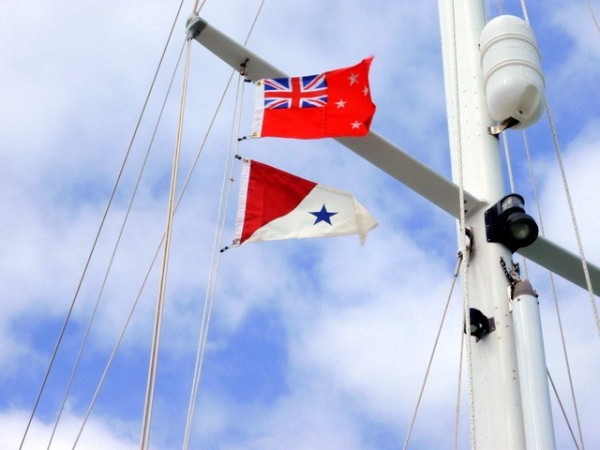 |
Our first stop, where we cleared into New Zealand, was Opua. Before moving south to Whangarei we visited some of the local sights.
17 Photos
Created 25 June 2013
|
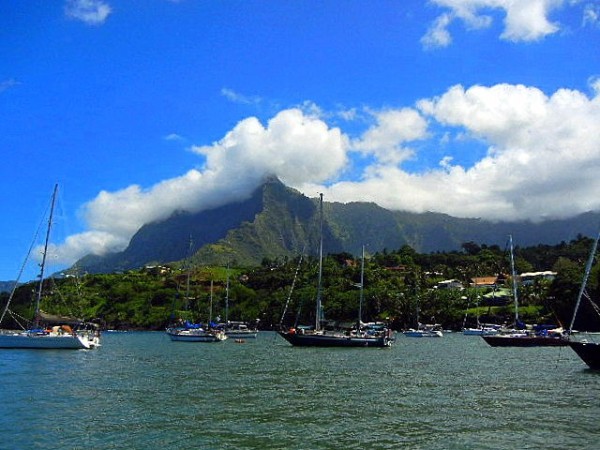 |
Hiva Oa was our first "Landfall in Paradise" after leaving Mexico, and our introduction to life in the islands of French Polynesia.
14 Photos
Created 6 August 2012
|
Sail Bright Angel
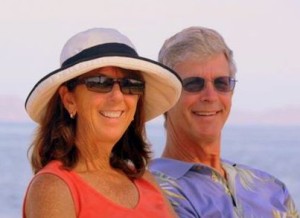
Who: Linda & Bob Hargreaves
Port: Olympia, WA
Current Position
Favorite Links
- John & Lisa on SV Orcinius
- Bill & Cat on SV Island Bound
- Bob & Ann on SV Charisma
- Chris & Rani on SV Ladybug
- Craig & Bruce on SV Gato Go
- Jon & Carol on SV Arnamentia
- Jon & Heather on SV Evergreen
- Ken & Beth on SV Eagles Wings
- Mark & Anne on SV Blue Rodeo
- Pat & John on SV The Rose
- Rich & Cyndi on SV Legacy
- Sail Bright Angel

